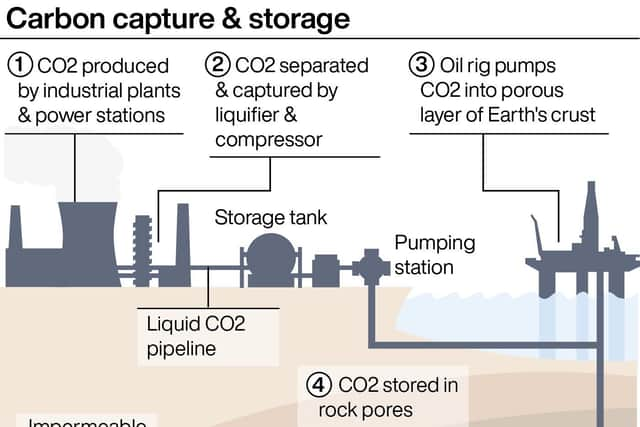Acorn: What is the Acorn Carbon Capture Project in Scotland? How does carbon capture work?
Rishi Sunak has committed to providing up to £20 billion of funding for early deployment of carbon capture, utilisation and storage (CCUS), with the Acorn project in Scotland’s north east now receiving support, along with the Viking project in the Humber.
The announcement was welcomed by energy giants Shell, as well as SNP Westminster leader Stephen Flynn, with the latter warning “the devil will very much be in the detail”.
What is the Acorn project?


Advertisement
Hide AdAdvertisement
Hide AdBased at St Fergus in Aberdeenshire, the Acorn project is a joint venture between carbon reduction company Storegga, Shell UK, Harbour Energy and North Sea Midstream Partners.
The Acorn Carbon Capture Scheme (CSS) in a CO2 transportation and storage system that reuses legacy oil and gas infrastructure to transport captured industrial CO2 emissions from the Scottish Cluster, to permanent storage 1.5 miles under the North Sea.
It aims to reduce the amount of carbon, mainly carbon dioxide (CO2), sent into the atmosphere, which in turn mitigates the impact of global warming.
How does carbon capture work?
Essentially, the process traps the carbon dioxide produced by burning fossil fuels or other chemical or biological processes, and stores it in a way that it is unable to damage the atmosphere, generally deep underground.
CCS has been in operation since 1972 in the US, where several natural gas plants in Texas have captured and stored more than 200 million tons of CO2 underground. There are around 194 large CSS sites around the world, 73 of which are in Europe, and 27 in the UK.
Comments
Want to join the conversation? Please or to comment on this article.
